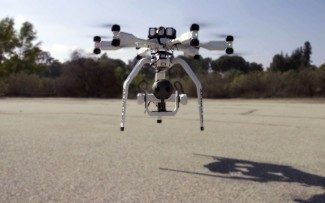Once upon a time if you were a filmmaker who wanted an aerial shot, you paid a hefty fee to charter a helicopter and brought a camera along for the ride. Today, filmmakers can use virtual reality to pre-plan and deploy an autonomous drone which will fly off and automatically capture the desired footage, thanks to Skywand. Sometimes it really does feel like we’re living in the future.

Although drones have made aerial photography much more accessible, there’s still a level of expertise needed to operate a professional grade drone with a pricey camera payload. The filmmaker may have a vision of the exact shot he or she wants, but unless they know how to operate the drone, that vision must be filtered through an operator/pilot.
Skywand aims to put the filmmaker in direct control with perhaps the most intuitive flight planning system yet seen for the task of capturing aerial photography via drone. With no knowledge of how to fly the drone itself, Skywand allows filmmakers to tower over a virtual copy of their subject as if they were a giant holding a camera. They can then frame the precise shots they want, using the virtual subject as a guide.
This is all an autonomous drone needs to fly off and capture the shots exactly as the filmmaker has envisioned them, with no need to actually know how to operate the drone.
Skywand is demonstrating their system at this week’s NAB Show in Las Vegas, Nevada. The company’s site is filled with impressive footage that they say was captured using their intuitive drone flight-planning system. You can see the precision with which the captured footage lines up with the flight plan created in virtual reality:
Amber Garage is the company behind Skywand; CEO Botao Hu tells me about the impetus for the project:
Two years ago, I was a Stanford CS graduate student and a landscape photographer. At that time the drone was trending and I was really amazed by awesome aerial footage. But I crashed my first drone on its first flight since I was really not good at remote controlling. Since then, I had been considering to create a more intuitive interface of flying drones for filmmakers who love to get awesome aerial shots but don’t want to master the remote controllers.
So I thought that what if you could actually hold the camera in the sky by your hand, just like in the ground. Just like a super giant standing in the city to control the drones. Thanks to the emergence of VR/AR technology, it gives me a chance to create Skywand’s VR/AR interface to control camera paths in the virtual world. For filmmakers, they are more familiar with storyboard mindset, but not joystick. Just filming, not flying.
Skywand claims support for HTC Vive as well as the Oculus Rift, though the latter won’t be released until Oculus launches their ‘Touch’ controllers later this year.






